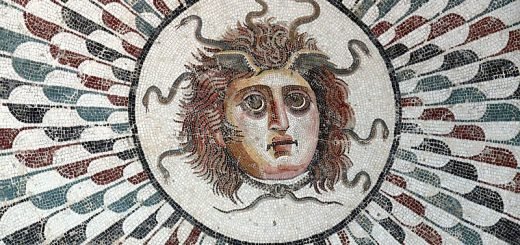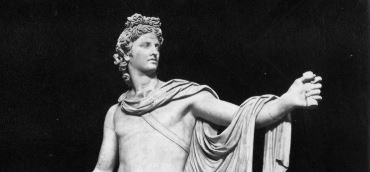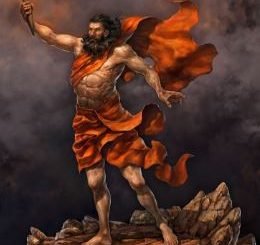The Myth of Jason and the Argonauts
The myth of Jason and the Argonauts, also known as the Quest for the Golden Fleece, is one of the most celebrated adventures in ancient Greek mythology.

The Argonauts derived their name from their ship the Argos. Their name therefore means “Argos sailors”. | Image: “The Argo”, by Greek painter Konstantinos Volanakis (1837–1907).
Like many Greek myths, this story celebrates the pursuit of excellence and heroism. The hero Jason assembles a crew of the best heroes and sailors from around Greece, emphasizing the Greek value of arete, or excellence in any endeavor.
The divine interventions in the Argonauts’ journey underscore the pervasive belief in ancient Greek culture that mortals’ lives and fates were deeply intertwined with the actions and whims of the gods.
The gods could be benefactors, adversaries, or both, and their favor was often contingent upon the deeds, honor, and respect shown by mortals.
Here is a summarized account Jason and the Argonauts and their perilous journey aboard the Argo:
Origin and Motive for the Quest
After the death of King Cretheus, Jason’s father Aeson was usurped by Pelias. To consolidate his power, Pelias executed every member of his family that could challenge him. And had it not been for the timely and passionate plea from their mother Tyro, Aeson would have been executed by Pelias.
Pelias agreed to spare the life of Aeson provided the latter openly renounced his claim to the throne.
Fast forward into some years later, and Aeson would marry a woman called Alcimede. The couple gave birth to a son called Jason. Kind courtesy to some quick thinking by Alcimede, Pelias was made to think that the baby Jason was stillborn.
Under the cover of darkness, Alcimede recruited a kind woman to sneak the baby Jason out of the royal palace, away from the evil machinations of Pelias. Jason was sent to Mount Pelion, where he was placed under the care of the wise centaur Chiron.
Jason confronts King Pelias
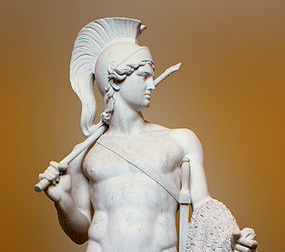
Jason was the rightful heir to the throne of Iolcus but was deprived of it by his wicked uncle Pelias. Image: Greek hero Jason
When Jason reached the age of maturity, he emerged from hiding and proceeded to confront Pelias to reclaim the throne.
King Pelias set Jason a seemingly impossible task: to retrieve the Golden Fleece from the distant land of Colchis.
The fleece was a symbol of royal power and was guarded by a dragon.
The Argo and the Argonauts
To embark on his dangerous journey, Jason commissioned the construction of a great ship named the Argo.
According to one account of the myths, the goddess Hera lent a helping hand to the construction of the ship. The queen of the Olympians even incorporated a talking beam into the ship. The talking beam went a long way in steering Jason and his crew away from serious predicaments on the high seas.
On his quest to secure the Golden Fleece, Jason was accompanied by a group of heroes, collectively known as the Argonauts. This group included many prominent figures such as Heracles (Hercules in Roman mythology), Orpheus, and Echion, Euphemus, Calais, and Tiphys.
In one account of the myth, Jason was accompanied by 49 people, including very distinguished heroes and sailors.
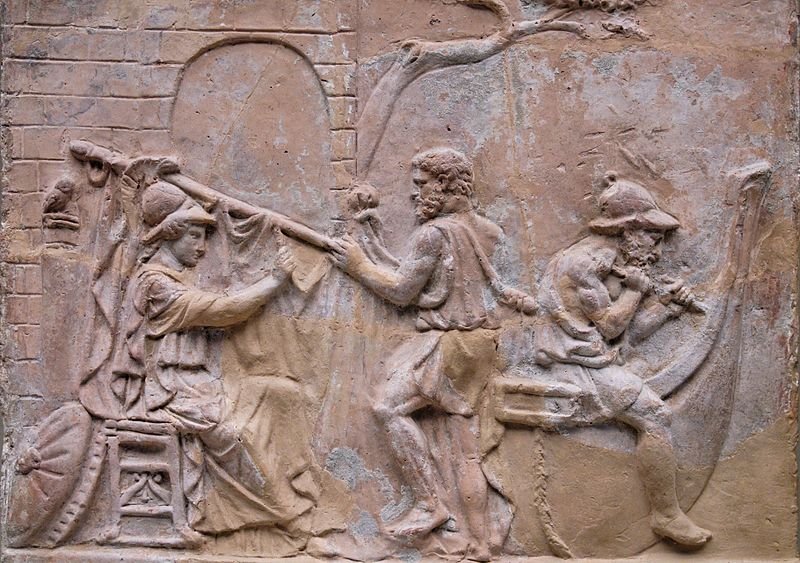
The Argo carried the Argonauts through their perilous journey to Colchis, a land at the eastern edge of the Black Sea, where the Golden Fleece was kept. The journey was filled with numerous mythical encounters and divine interventions.
Journey to Colchis
During their voyage, the Argonauts encountered numerous challenges:
- The Clashing Rocks (Symplegades): Massive floating rocks that crushed anything passing between them. With divine guidance and a clever strategy, the Argonauts managed to safely navigate through them.
- The Harpies and the blind prophet Phineus: Phineus had been tormented by Harpies, winged creatures that stole his food. In gratitude for their help in driving the Harpies away, Phineus provided the Argonauts with valuable advice for their journey.
- The Sirens: With the help of Orpheus’s enchanting music, the Argonauts were able to resist the lure of the Sirens’ song.
Arrival in Colchis
Upon reaching Colchis, King Aeëtes agreed to give Jason the fleece, but only if he could complete a set of perilous tasks. These included plowing a field with fire-breathing oxen, sowing dragon’s teeth into the field, and then battling the warriors (Spartoi) that sprouted from them.
With the assistance of Aeëtes’s daughter, the sorceress Medea, who had fallen in love with Jason, he was able to accomplish these tasks. Using her magic, Medea also helped Jason overcome the dragon guarding the fleece.
The journey back to Iolcus
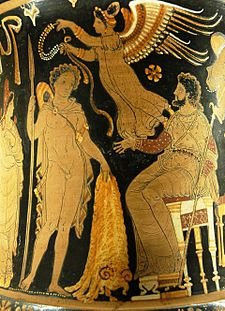
Jason bringing Pelias the Golden Fleece, Apulian red-figure calyx krater, ca. 340 BC–330 BC, Louvre
Having obtained the Golden Fleece, Jason and Medea fled from Colchis, pursued by Aeëtes’s forces.
To delay the pursuers, Medea took drastic measures, including the dismemberment of her brother, Apsyrtus. The return journey was marked by numerous other challenges and adventures, including evading the bronze giant Talos on the island of Crete.
When Jason and the Argonauts came to the island of Crete, they found themselves terrorized by a bronze man called Talos who threw huge boulders at the ship. Medea once again intervened, casting a spell that soothed the emotions of Talos. With Talos removed from the way, the Argo could sail safely past Crete and head to Iolcus.
READ MORE: Greek Gods and Goddesses that guided or obstructed the Journey of the Argonauts
The tragic story of Jason and Medea
Once back in Iolcus, Jason attempted to claim his throne. However, his challenges didn’t end with the retrieval of the fleece. Due to Medea’s controversial actions, both she and Jason eventually faced exile.
Jason and Medea would head to Corinth, where they agreed to raise a family together. However, Jason reneged on his promise and instead tied the knot with Creusa, a daughter of the King of Corinth.
The tragic love story of Jason and Medea further unfolds with betrayal, resulting in a dark conclusion with Medea taking revenge against Jason in a most heart-wrenching manner. Medea presented a wedding dress to Creusa.
Unbeknownst to Creusa, the gift was imbued with dark magic, and when the bride wore it, she was immediately consumed by fire. Not only Creusa would die, but her father, King Creon, would also perish as he tried to extinguish the burning flames.
Still filled with anger, Medea proceeded to murder the two children she bore with Jason. The sorceress then fled to Athens using a dragon-drawn chariot supplied by her grandfather, Helios (the personification of the sun).
For breaking his promise to Medea, Hera withdraws her support to Jason. Although he managed to claim the throne of Iolcus, the hero is said to have died a lonely and sad man.
In the myth, Jason died as a result of one of the rotting beams of the Argo falling on him.
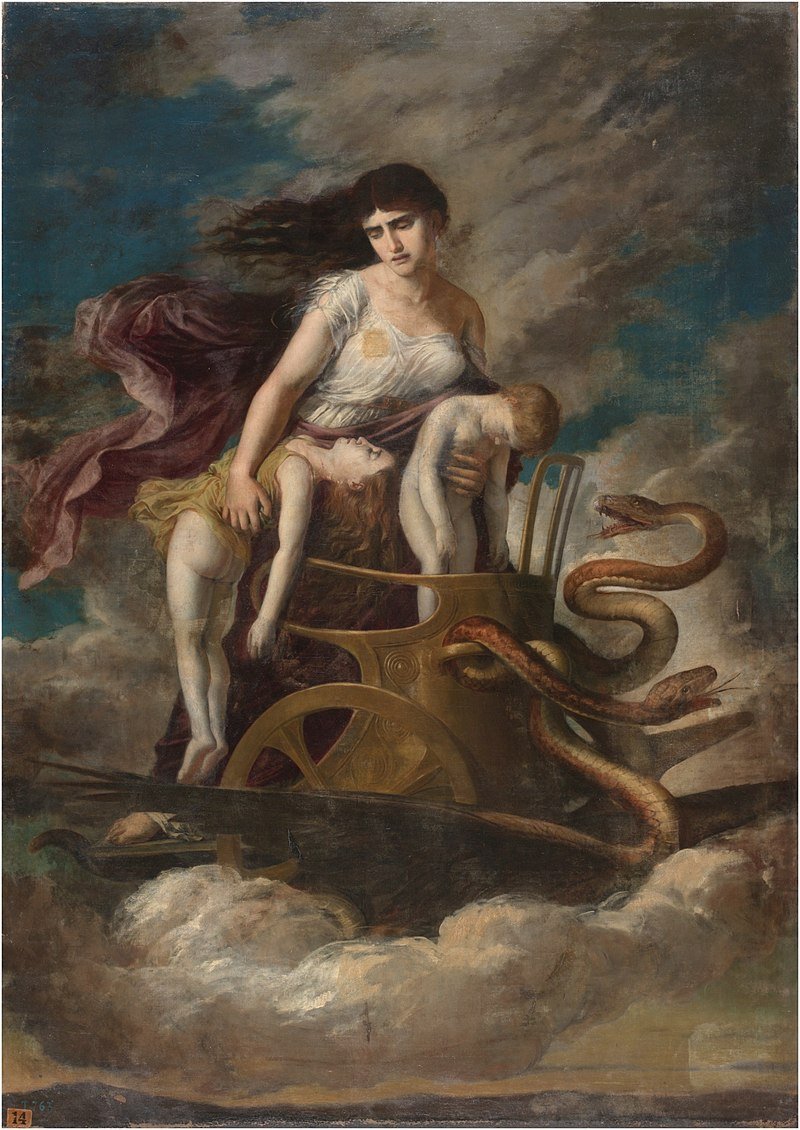
Medea on her golden chariot, by Spanish painter Germán Hernández Amores
Conclusion
The myth of Jason and the Argonauts touches on themes of heroism, the challenges of the hero’s journey, the intervention of gods in mortal affairs, and the tragic consequences of love and betrayal.
READ MORE: Most Famous Heroes and Heroines in Greek Mythology
Questions & Answers
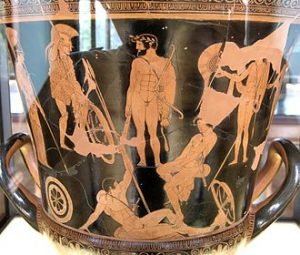
Gathering of the Argonauts, Attic red-figure krater, 460–450 BC, Louvre (G 341).
Why was Hera committed to Jason and the Argonauts?
One of the chief patrons of the expedition. Jason had once aided Hera when she was disguised as an old woman. As a result, the queen of the gods chose to assist him throughout his quest. She often intervened directly or sought the aid of other gods and goddesses to guide and protect the Argonauts.
How does the story of Jason and the Argonauts reflect ancient Greek values and beliefs?
The tale of Jason and the Argonauts is rich with themes and motifs that reflect the values, beliefs, and concerns of ancient Greek society.
The ancient Greeks believed deeply in the power of fate and prophecy. The very quest for the Golden Fleece arises from a prophecy that King Pelias receives, suggesting a man with one sandal would be his downfall.
The story underscores the belief that gods and goddesses were actively involved in the affairs of mortals. Their capricious nature meant that humans needed to seek their favor and be wary of their wrath.
The numerous challenges the Argonauts face emphasize the Greek idea that suffering and overcoming adversity lead to personal growth and heroism. Through trials, a hero proves his worth.
While physical strength is important, many of the Argonauts’ challenges are overcome through cunning and intelligence. Medea’s sorcery, the strategy to pass the Symplegades, and the way to tame the Colchian dragon all underscore the value of intellect.
The myth touches upon complex human relationships and the consequences of betrayal. Jason’s eventual betrayal of Medea, after all she does for him, has tragic consequences, emphasizing the importance of loyalty in Greek values.
Overconfidence or hubris is a recurring theme in Greek mythology. Jason’s later misfortunes, especially in versions of the myth where he grows complacent and arrogant after obtaining the Fleece, reflect the Greek warning against excessive pride.
While the story contains treachery and deceit (like King Pelias’ deception), it also highlights the Greek belief in justice. Many characters in the story eventually face consequences for their actions, underscoring a belief in a moral order to the universe.
What was Medea’s role in the journey of the Argonauts?
Medea was initially an obstacle to the Argonauts since she was the daughter of King Aeetes of Colchis. However, after falling in love with Jason, she becomes instrumental in helping him obtain the Golden Fleece. It’s possible that Aphrodite, the Greek goddess of love and beauty, was the one who made Medea fall in love with Jason.
Medea’s role becomes even more crucial. Her sorcery helps the Argonauts in several situations, such as when she tricks her pursuing brother Apsyrtus and later kills him, or when she uses her powers to help the crew pass obstacles.
What route did the Argonauts take on the journey?

The Argo (c. 1500–1530), painting by Italian painter Lorenzo Costa
The Argonauts’ route to Colchis was more straightforward, sailing through the Hellespont and the Black Sea.
To evade the pursuing Colchians, the Argonauts took a more circuitous route, navigating through the Adriatic and Mediterranean Seas and facing numerous challenges along the way.
Who were the gods and goddesses actively involved in the journey of the Argonauts?
According to the myths, the gods and goddesses either guided or obstructed the journey of the Argonauts.
The gods and goddesses played significant roles in guiding and assisting the Argonauts. For instance, Hera and Athena were particularly invested in the success of the mission and provided help at various junctures. Hera enlisted the help of other gods to assist Jason and the Argonauts.
For example, Hera requested Aphrodite’s assistance in ensuring Medea, the daughter of King Aeetes of Colchis, would fall in love with Jason. The love-struck Medea then played a crucial role in helping Jason secure the Golden Fleece.
Eros, the god of love and son of Aphrodite, was the one who shot Medea with a love arrow, ensuring her immediate and intense infatuation with Jason.
And the god of the sea, Poseidon occasionally played a role in either calming the waters for the Argonauts or presenting challenges. For instance, he fathered the giant Talos, who the Argonauts had to face and defeat during their journey.
On their return to Iolcus, the divine intervention continues but also includes instances of wrath and challenges set by gods, such as when Zeus sends a storm as punishment for the death of Apsyrtus.
READ MORE: Sons of Zeus, the Chief of the Greek Pantheon
What was the mood like on the journey?
The journey to Colchis is filled with optimism, camaraderie, and the spirit of adventure as the crew faces challenges together.
The atmosphere becomes more tense and somber, especially with the pursuit of the Colchian fleet and the need to make difficult decisions. The death of Apsyrtus and the subsequent need to appease the gods add a dark tone to the journey.
Why was Jason and Medea exiled from Iolcus?
Medea was accused of killing King Pelias. In an attempt to restore some vitality to Pelias, Medias ordered Pelias’ daughters to chop up the king and place the dismembered body into a cauldron.
However, Medea forgot to add just the right amount of magical herbs that would have brought Pelias back to life and restored his youth. King Pelias died and his son Acastus banished Jason and Medea out of Iolcus.
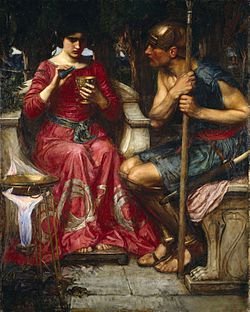
Jason and Medea – as depicted by English artist John William Waterhouse, 1907.
